Hanoi Industrial Park is changing every day | Hanoi is the capital of the Socialist Republic of Vietnam, a centrally-governed city and also a special urban area of Vietnam. Over 1,000 years of formation and development, Hanoi has witnessed the ups and downs of most of Vietnam’s feudal dynasties from Ly – Tran – Le – Mac – Nguyen…
Hanoi soon became a political, cultural and scientific and technical center. As the capital, Hanoi is home to many important cultural and entertainment venues and sports facilities of the country. Hanoi is also the chosen location to host many international political and sporting events, and is a major center for economic and international transactions of the whole country.
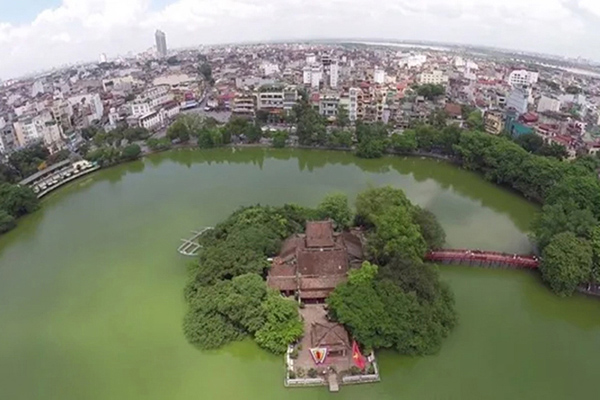
Geographical location
The capital Hanoi is located in the northwest of the center of the Red River Delta. Currently, the city has an area of 3358.6 km2, accounting for about 1% of the country’s natural area, ranking 41st in area among 63 provinces and cities in our country, and is one of 17 capitals with an area of over 3000 km2.
Hanoi borders 8 provinces, specifically:
- The North borders Thai Nguyen, Vinh Phuc
- The South borders Ha Nam, Hoa Binh
- The East borders Bac Giang, Bac Ninh and Hung Yen
- The West borders Hoa Binh and Phu Tho
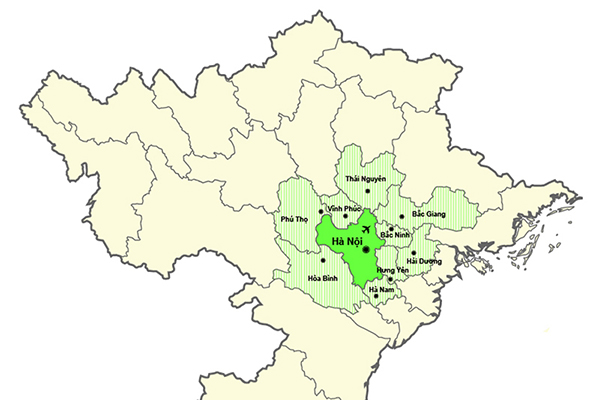
Administrative units
After changes in administrative boundaries in 2008, by 2021, Hanoi has 30 district-level administrative units, including 12 districts, 17 rural districts, 1 town with 579 commune-level administrative units, including 383 communes, 175 wards and 21 towns. This is the only centrally-run city in Vietnam with towns. It is expected that by 2025, Hanoi will have 5 new districts: Hoai Duc, Dong Anh, Thanh Tri, Gia Lam and Dan Phuong, bringing the total number of districts in Hanoi to 17.
- 12 districts: Ba Dinh; Bac Tu Liem; Cau Giay; Dong Da; Ha Dong; Hai Ba Trung; Hoan Kiem; Hoang Mai; Long Bien; Nam Tu Liem; Tay Ho; Thanh Xuan.
- 17 districts: Ba Vi; Chuong My; Dan Phuong; Dong Anh; Gia Lam; Hoai Duc; Me Linh; My Duc; Phu Xuyen; Phuc Tho; Quoc Oai; Soc Son; Thach That; Thanh Oai; Thanh Tri; Thuong Tin; Ung Hoa.
- 1 town: Son Tay
Population
Hanoi is the second most populous provincial administrative unit in Vietnam with 8.05 million people (2019), of which 49.2% are urban residents. As of July 2021, Hanoi’s population reached more than 8.3 million people.
Also according to 2019 data, Hanoi’s population density is 2,398 people/km2, the second highest among all provinces, but the population distribution is uneven; the population gap between districts, between urban and rural areas is still large and continues to increase. The highest population density is in Dong Da district, up to more than 42,000 people/km2 (2018), while in suburban districts such as Ba Vi and My Duc, the density is less than 1,000 people/km2.
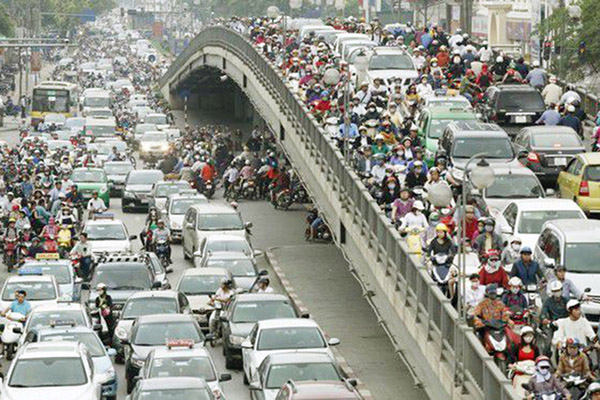
Education
Hanoi has a developed and modern education system. Hanoi universities account for 82% of the country, key scientific research laboratories account for 80% of the country, intellectuals and scientists account for 65% of the country, high-tech industrial parks account for 2/5 of the country.
Traffic infrastructure is increasingly developing in a modern direction
Hanoi is located in a convenient traffic location. From Hanoi, it is easy to travel and trade with provinces and cities across the country by road, rail, waterway and air. Hanoi has determined to focus on synchronously developing traffic infrastructure connecting the central urban area; with suburban areas, provincial urban areas, provinces and cities in the Capital region. Solving traffic congestion is an urgent need. Goals in the next 5 years:
The city mobilizes all resources, synchronously deploys solutions; promotes the application of scientific and technological advances in traffic organization, management and operation; build a synchronous, smart, modern, convenient, orderly, safe, quality, effective, and efficient traffic infrastructure in Hanoi capital; create a strong change in ensuring traffic order and safety; solve traffic congestion in the city, especially in the central urban area; (from Ring Road 4 onwards); urban areas; radial roads; national highways, provincial roads; traffic hubs (train stations, bus stations). In the period of 2021 – 2025, Hanoi will invest more than 332,516 billion VND in developing traffic infrastructure.
Railways and elevated railways (metro)
Hanoi is the traffic hub of five domestic railway lines and one intermodal route to Beijing, China, to many European countries, and one international route to Kunming, China.
The urban railway network plays a role in creating a complete backbone for the capital’s transport system, creating opportunities for comprehensive economic, social, cultural and political development. According to the plan, Hanoi will have 10 urban railway lines with a total length of 417.8 km, including 5 lines running in the central area, 5 lines connecting to urban areas in the province and the suburbs.
In particular, the 13 km long Cat Linh – Ha Dong line 2A has completed 100% of the construction volume and put into commercial operation on November 6, 2021. Meanwhile, the Nhon – Hanoi Railway Station line continues to be completed and is expected to be put into commercial operation at the end of 2022.
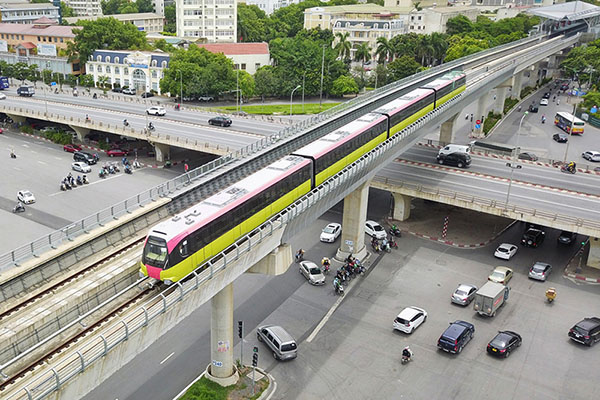
Hanoi Industrial Park is changing every day
Roads
Hanoi has many expressways in the area such as Thang Long Avenue, Phap Van – Cau Gie; Hanoi – Lang Son, Hanoi – Hai Phong, Noi Bai – Lao Cai, Hanoi – Thai Nguyen; Hanoi – Hoa Binh, built and completed to quickly and conveniently connect the capital with the provinces. The expressway traffic project connects the center of Hanoi with 5 satellite cities; there are 9 expressways connecting the capital with the provinces and cities of the capital region.
Ring roads: the construction of 7 ring roads 1, 2, 3, 4, 5, 2, 5 and 3.5; in Hanoi is being urgently implemented. After completion, this route will become an important trade bridge; connecting a series of impressive economic zones in the North such as Bac Ninh; Bac Giang, Hai Phong, Hinh An and Vinh Phuc.
Southern, Gia Lam, Nuoc Ngam, Giap Bat, Yen Nghia, My Dinh bus stations are; where inter-provincial passenger vehicles spread out across the country along National Highway 1A across the North – South; and turn onto National Highway 21 to Nam Dinh, National Highway 2 to Ha Giang, National Highway 3 to Bac Kan; Cao Bang, Thai Nguyen; National Highway 5 to Hai Phong, National Highway 17 to Quang Ninh; National Highway 6 and National Highway 32 to the Northwestern provinces.
Airways
Hanoi has Noi Bai International Airport, the largest international airport in Vietnam, with the most routes in the country. Hanoi’s international airport was ranked by Skytrax in the top 100 best airports in the world at position 86/100. The most notable of which is the opening of Terminal T2 in 2015 and is considered “the largest, most modern terminal in Vietnam, which has fundamentally improved the infrastructure of Noi Bai International Airport”.
There are currently 5 domestic airlines and 22 international airlines flying to Noi Bai International Airport, and many international airlines are also considering opening flights here such as Czech Airlines, Get Airway, Finnair and finally Air Astana. The target of total capacity through the port after 2020 is 50 million passengers/year.
Waterway
Hanoi is an important traffic and waterway hub with the Den Ferry terminal going to Hung Yen, Nam Dinh, Thai Binh, Viet Tri and the Ham Tu Quan terminal going to Pha Lai.
Rivers flowing through Hanoi include about 20 rivers, including some large rivers such as: Red River (30km), Duong River (17.5km), To Lich River, Nhue River… Hanoi has built 9 ports, 17 inland waterway terminals and 58 river terminals in the inland waterway traffic system.
GDP growth in 2020
In 2020, the city’s GRDP increased by 3.98% compared to 2019 (the first quarter increased by 4.13%; the second quarter increased by 1.76%; the third quarter increased by 3.95%; the fourth quarter increased by 3.77%), reaching a low level compared to the plan and growth rate of 2019, mainly due to the severe impact of the Covid-19 pandemic. The scale of GRDP in 2020 reached 1,016 trillion VND.
In particular, the industrial and construction sector in 2020 increased by 6.39% compared to 2019, contributing 1.43% to the GRDP growth. Of which: the industry sector increased by 4.91% for the whole year, contributing 0.69% to the overall growth rate. The construction industry continued to increase by 8.9% compared to 2019, contributing 0.74% to the overall growth.
The service sector in 2020 increased by 3.29% compared to the previous year (contributing 2.1% to the GRDP growth), much lower than the increase of 7.27% in 2018 and 7.59% in 2019 due to the heavy impact of the Covid-19 pandemic, especially the following industries and fields: Tourism, hotels, restaurants, transportation, import-export, entertainment, etc.
The wholesale and retail industry was a bright spot in the service sector in 2020 with an increase of 8.84%, one of the industries that contributed positively to the city’s overall growth (contributing 0.81% to the GRDP growth).
Some sectors maintained good growth: Finance, banking, insurance increased by 7.21%; information and communication increased by 6.89%.
GRDP per capita reached 122.7 million VND (equivalent to 5,285 USD), up 2.34% compared to 2019.
The economic structure has many changes: the agriculture, forestry and fishery sector accounts for 2.42% of GRDP; the industry and construction sector accounts for 23.67%; the service sector accounts for 62.79%; product taxes minus product subsidies account for 11.3% (the corresponding structure in 2019 was: 2.02%; 22.9%; 63.73% and 11.35%).
Economic development in 11 months of 2021
a. Industrial production: the industrial production index increased by 4.6% over the same period last year, of which: processing and manufacturing industry increased by 4.5%; electricity production and distribution increased by 5.1; water supply and waste and wastewater treatment increased by 6.6%; mining increased by 3.5%.
The labor utilization index of industrial enterprises increased by 0.2% over the same period last year, of which the number of employees working in foreign-invested enterprises increased by 3.2%; the state sector decreased by 2.2%; the non-state sector decreased by 3.3%.
b. Attracting foreign direct investment (FDI): In the first 11 months of 2021, the whole city attracted 1.3 billion USD of FDI capital, of which 330 newly registered projects with a capital of 210.6 million USD; 110 projects increased investment capital with 634 million USD; foreign investors contributed capital and bought shares 436 times, reaching 426 million USD.
c. Business registration situation: In the first 11 months of 2021, Hanoi had 22.1 thousand newly registered enterprises, down 10% over the same period last year; registered capital reached 307.8 trillion VND, up 2%; 9.5 thousand enterprises resumed operations, up 64%. The rate of online business registration applications was maintained at 100%, ensuring quality and on time.
d. Trade and services:
Total retail sales of goods and consumer service revenue: In the first 11 months of 2021, total retail sales of goods and consumer service revenue is estimated at 497.4 trillion VND, down 6.3% over the same period last year.
Export turnover of goods: In the 11 months, the export turnover of goods is estimated at 13.7 billion USD, down 0.8% over the same period last year, of which the domestic economic sector reached 7.5 billion USD, down 9.8%; the foreign direct investment sector reached 6.2 billion USD, up 12.9%.
Import turnover of goods: In the 11 months, the import turnover of goods is estimated at 30.9 billion USD, up 19.3% over the same period last year, of which the domestic economic sector reached 24.2 billion USD, up 22.7%; the foreign direct investment sector reached 6.7 billion USD, up 8.2%.
e. Employment: the city created jobs for more than 160,000 workers, completing the assigned plan for the year but down 1.7% compared to the same period in 2020.
Targets for 2025:
The Hanoi People’s Committee has issued Action Program No. 277/CTr-UBND on implementing the 5-year socio-economic development plan for 2021-2025.
The program identifies the following key targets and tasks:
- Average growth rate of Gross Regional Domestic Product (GRDP) in the period of 2021-2025: 7.5-8.0%; of which: services: 8.0-8.5%; industry and construction 8.5-9.0%; agriculture, forestry and fishery: 2.5-3.0%.
- Economic structure in 2025: services 65.0-65.5%; industry and construction 22.5-23%; agriculture, forestry and fishery 1.4-1.6%
- Manufacturing industry added value in GRDP 17%
- Export turnover 20.470 billion USD;
- Number of tourists welcomed and served reached 35-39 million (including 8-9 million international tourists)
- Average GRDP/person: 8,300-8,500 USD
- Social development investment capital 3.1-3.2 million billion VND
- Digital economy proportion in GRDP about 30%
- Labor productivity growth rate 7-7.5%
- Proportion of trained workers: 75-80%; proportion of workers with degrees and certificates: 55-60%
- Proportion of public schools meeting national standards 80-85%
- Number of hospital beds/10,000 people is 30-35; number of doctors/10,000 people is 15;
- Urbanization rate 60-62%
- Urban wastewater treatment rate 50-55%
- Public passenger transport rate 30-35%;
- Total state budget revenue in the area is about 1,405 trillion VND
- Total local budget expenditure is about 613.7 trillion VND
- Total social development investment capital needs to be mobilized is over 3 million billion VND
- Each year, it is necessary to create about 22 thousand jobs, at the same time, introduce and solve jobs for an average of about 160 thousand people to ensure the unemployment rate is below 3%.
By 2030, Hanoi will become a “green – smart – modern” city; develop dynamically, effectively, and be competitive in the region and internationally; complete the industrialization of the capital; GRDP/person reaches 12,000-13,000 USD. By 2045, Hanoi will have a high quality of life; comprehensive and sustainable economic, cultural and social development; be a globally connected city, internationally competitive, GRDP/person reaches over 36,000 USD.
Hanoi Industrial Park Development
Hanoi strives to complete the industrialization goal by 2025; become a modern industrial city by 2030; with a vision to 2045, Hanoi will become a modern industrial city of the region and the world, and the information industry center of the whole country… Hanoi aims to develop selective industrial production sectors, making breakthroughs in sectors and products using modern industry, advanced technology, and high intellectual content, as a basis for developing a knowledge-based economy. In the immediate future, the city will prioritize sectors such as: information technology, precision mechanics, electrical and electronic equipment, biotechnology, pharmaceuticals, production and use of new materials…
The plan of the Hanoi Party Committee sets out specific goals and targets for 2030, the proportion of industrial value accounts for 70% of the value of the industrial – construction sector; The proportion of processing and manufacturing industry in industry reaches over 90%; the proportion of high-tech industrial product value in processing and manufacturing industries reaches at least 80%; the growth rate of added value in the industrial and construction sector reaches an average of over 9-10%/year; in particular, Hanoi strives to build a number of industrial clusters and large-scale, multinational domestic industrial enterprises with international competitiveness…
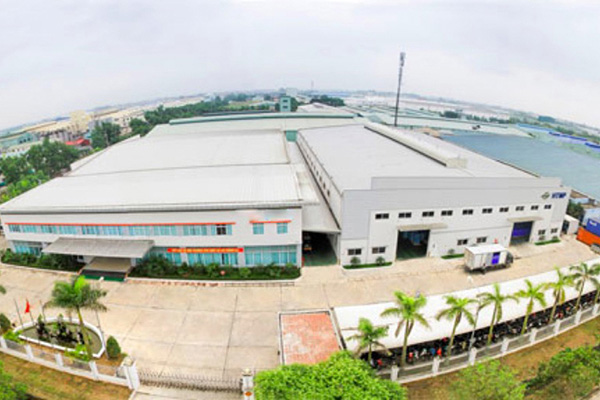
Hanoi develops 17 industrial parks
Hanoi has developed 17 industrial parks, export processing zones and high-tech industrial parks with a total area of nearly 3,500 hectares. Of which, 9 industrial parks and export processing zones with a total area of 1,264 hectares are operating stably. The occupancy rate of over 95% of industrial land includes: Thang Long; Noi Bai; Thach That – Quoc Oai; Nam Thang Long; Sai Dong B; Hanoi – Dai Tu industrial park; Quang Minh I; Phu Nghia; information technology park.
Some industrial parks still have land to attract investment such as: Phu Nghia industrial park: 20ha; Quang Minh I industrial park: 2ha. Other industrial parks are preparing to invest in infrastructure. Particularly, the Nam Ha Noi supporting industrial park, with an area of 77ha, is continuing to complete the construction of technical infrastructure to attract secondary investment.
9 industrial parks, export processing zones and high-tech zones have come into operation, attracting 663 projects, including 345 foreign investment projects, with registered capital of nearly 6.1 billion USD and 318 domestic investment projects, with registered capital of over 15,000 billion VND. The total number of employees working in Hanoi’s industrial and export processing zones is 161,896 people (an increase of about 2,000 employees compared to the end of 2018), of which foreign employees: 1,228 people. The emergence of industrial parks and export processing zones has changed the face of suburban districts, contributing to improving people’s knowledge and narrowing the development gap between rural and urban areas.
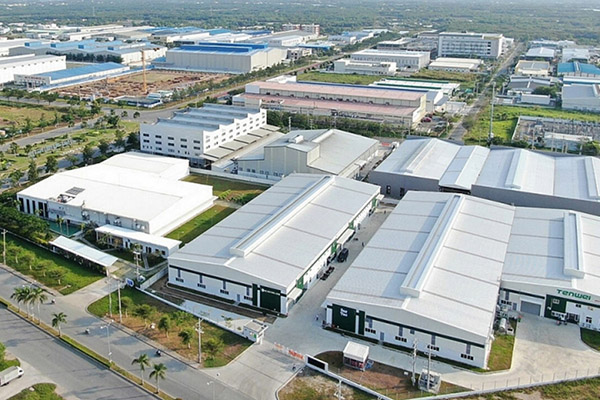
Has the highest occupancy rate of industrial parks and export processing zones in the country
Currently, the capital Hanoi is one of the localities with the highest occupancy rate of industrial parks and export processing zones in the country (over 95% of industrial land area), the number of projects, registered investment capital, and number of workers account for about 10% of all industrial parks nationwide. Each hectare of land in an industrial park or export processing zone has created new jobs for over 100 workers on average and contributed over 1.5 billion VND to the budget. Industrial parks and export processing zones have created about 50% of the value of industrial output, 45% of export turnover and over 20% of the city’s GDP, contributing to a strong shift in the city’s economic structure towards increasing the proportion of industry and services.
As of December 2021
As of December 2021, Hanoi industrial parks have attracted over 700 projects, including 303 foreign direct investment (FDI) projects with a total registered investment capital of nearly 6.1 billion USD; 399 domestic investment projects with a total registered investment capital of nearly 18,000 billion VND. In the period of 2015-2020, investment attraction in Hanoi industrial parks was 1.7 billion USD, reaching 130% of the set target, an increase of 13% compared to the period of 2011-2015.
There are 25 countries and territories with investment projects in Hanoi industrial parks; of which, Japan is the leading country with registered capital accounting for 60%; Many large-scale projects from 100 million to more than 300 million USD, using high-tech such as projects of Canon, Panasonic, Yamaha, Meiko, Young Fast… in addition, there are other countries such as China, Korea, Singapore…
Period 2020-2025
Some key targets for the period 2020-2025 of Hanoi’s industrial parks and export processing zones are: annual revenue of 8.6 billion USD; average growth rate strives to reach 6%/year. Exports are expected to reach an average of 5.4 billion USD/year; average growth rate of 7.2%/year. Budget contribution reaches from 250 million USD to 300 million USD/year; average growth of 15%/year. Putting 2 to 3 industrial parks into infrastructure investment and exploitation to attract investment.
In addition, the Hanoi People’s Committee has prepared a land fund of about 450 hectares in industrial parks to serve the relocation of industrial production facilities in the inner city. Industrial production facilities in Hanoi’s inner city are subject to relocation (about 113 facilities) after 2020, except for the Gia Lam Railway Factory with an area of about 27 hectares, the rest are mostly quite small in scale (an average of about 0.3 hectares/facility). After relocation, the land will be prioritized for the construction of public works, trees, parking lots, etc.
Targets by 2030 and 2050
In early January 2022; the Chairman of the Hanoi People’s Committee has just signed a decision approving the project, the industrial parks expected to be established include: Soc Son clean industrial park, Soc Son district; Dong Anh industrial park, Dong Anh district; Bac Thuong Tin industrial park, Thuong Tin district, Phu Nghia industrial park expansion in Chuong My district; Phung Hiep Industrial Park, Thuong Tin District.
Hanoi is restructuring industrial parks and export processing zones strongly and resolutely with concrete actions to improve the investment environment; promptly remove difficulties, strengthen the confidence of enterprises; investors operating in industrial parks and export processing zones, promote training programs and develop high-quality human resources; pay attention to the material and spiritual life; living conditions of workers; with the long-term goal of sustainable development of industrial parks and export processing zones. The goal by 2030 and 2050 in the capital city of Hanoi; there will be 33 industrial parks and high-tech parks.
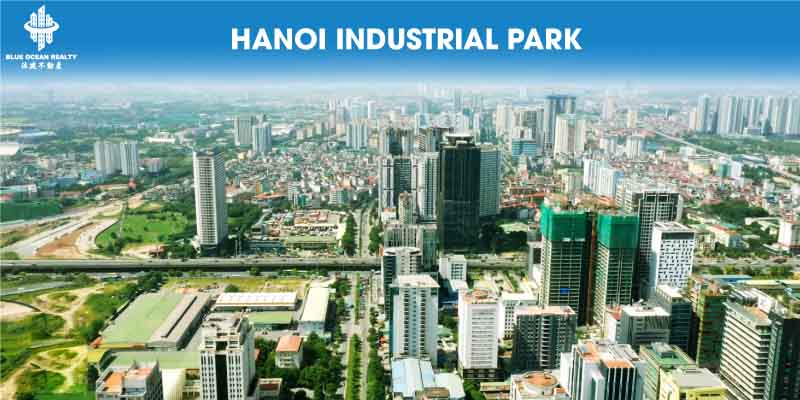
 Learn more about us:
Learn more about us:
—






—



